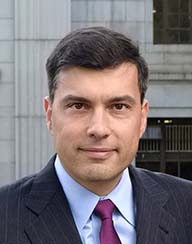Do smartphone apps that allow us to travel on the “fastest” route really help to improve traffic flows?
Sometimes, trying to make things better actually makes them worse. If only a few people use apps to evade traffic snarls, everything works, but as more and more drivers tap on navigation apps for the fastest route around the freeway crawl, they often slow things down. They create new congestion -- at freeway exits and on streets not designed for heavy traffic. Berkeley’s Alexandre Bayen argues that the problem won’t be solved by building more freeways or creating barriers in neighborhoods to discourage traffic. Transportation engineers must keep up with popular technologies and more nimbly respond to problems that emerge when millions of drivers adopt a new commuting strategy. We need to devise policy and technologies that help app makers work collaboratively with city planners. For example, traffic flow models that optimally split flows of commuters along parallel routes can help solve the problem by providing app users equally good routes, but which work well with the road and highway infrastructure.
 Alexandre Bayen
Alexandre Bayen
Alex’ research focuses on mobile sensing that relies on new and innovative ways to harness data from smart phones and connected wearables. His work has many exciting applications, including several that are related to energy and climate, traffic and mobility, as well as water monitoring. He is the Director of Berkeley’s Institute of Transportation Studies and has received numerous prestigious awards for his pathbreaking work. Read more about Alexandre Bayen.
